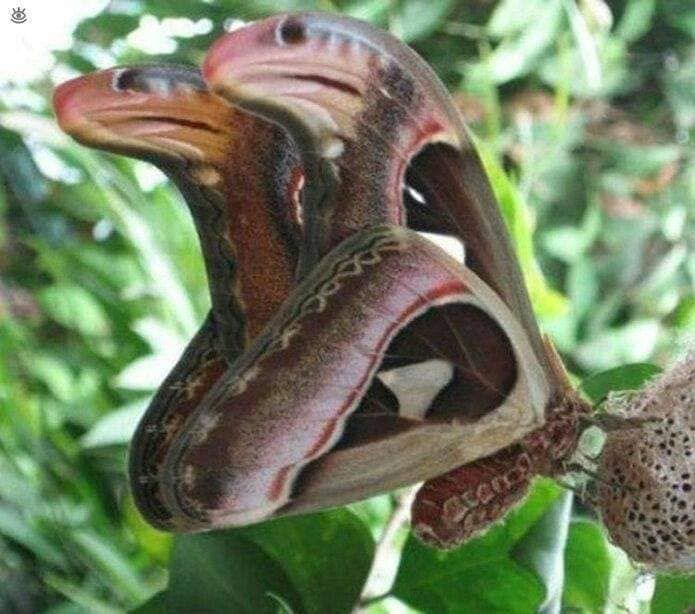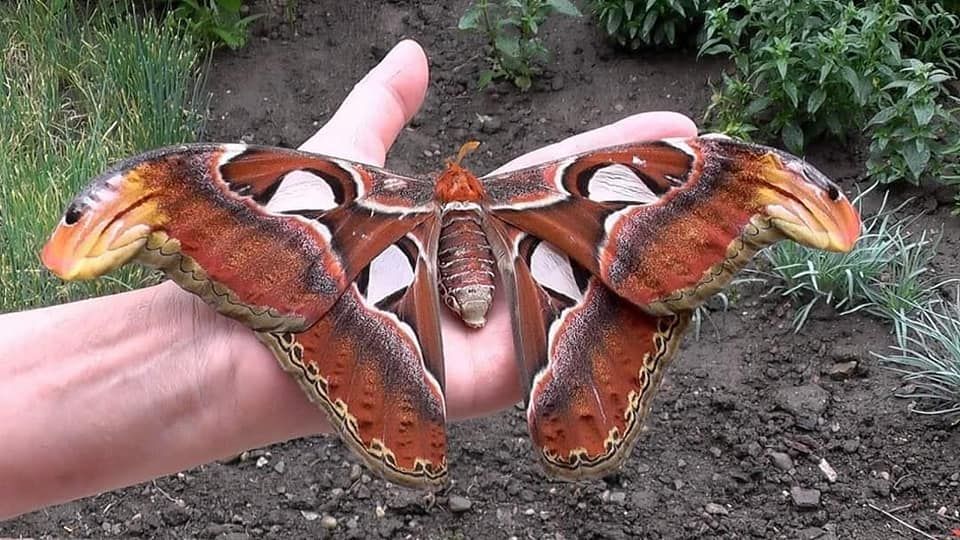The Atlas Moth
-
https://www.calacademy.org/explore-science/atlas-moth
An Atlas moth (Attacus atlas) rests on a tree trunk with its wings closed. A bird, hoping for a snack, creeps closer, until it's within striking distance. Just as it’s about to pounce, the moth’s wings spring open—and bam! Instead of a moth, the bird suddenly sees not one, but two snake heads. Confused and startled, the bird flies away—and the moth gets to live another day.
Atlas moths are perhaps most famous for the markings on the upper corner of their wings, which bear an uncanny resemblance to cobra heads (in profile). While not all entomologists are convinced of that visual mimicry, there is some convincing evidence. Cobras live in the same part of the world as these moths, and the moth’s main predators—birds and lizards—are visual hunters. Plus, species related to the Atlas moth have similar but less defined versions of the snake’s head, showing a pattern that could have been fine-tuned by natural selection.
In addition to the markings, the wings of the Atlas moth contain translucent areas that may function as “eyespots.” These false eyes could not only startle predators, but could also divert attention from more vulnerable parts of the moth’s body. If, say, a particularly stubborn predator decides to attack the eyespots, damage to the wings would not be as catastrophic as damage to the moth’s head or body. In the bird-eat-bug world, a little ruse can mean the difference between life and death.

